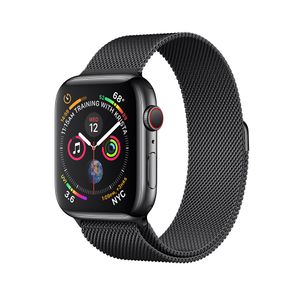

The communicator is the central piece of Solas Tempus equipment given to any and all Solas Tempus employees, contractors, personnel, and even citizens of the Serenity Concord. It is designed to provide effective and easy to use communications for the user across BlueNet and similar subspace, microwave, and conventional radio networks. The 4th generation communicator takes the design in a different direction considering field experiences of military and civilian personnel alike. The original 1st and 2nd generation designs were primarily military devices with the 3rd generation being the first device designed with civilian uses in mind. Since it's release in February of 2384 the 3rd Generation design has been widely distributed among civilian and military markets, with a more varied feature set than previous anticipated.
The Mark 4 design replaces the Mark 3 design as of August of 2385.
Capabilities
The capabilities of the Mark 4 have been divided into categories depending on the intended use of the device. Some capabilities are for the use of Solas Tempus personnel only while others are available to the general public. Since the device is used as an authentication and communications device among civilian and military populations, this is necessary to prevent some of the more dangerous functions from being used without proper training and authorization.
Power Source
All models of the device are powered by the Spacial Variance Reactor. The reactor itself is coupled with a high efficiency battery which acts as a power reservoir. The reactor can deplete its energy level quickly during extremely high output operations and the battery allows the system to maintain a stable level of high energy output for extended periods of time.
Computer System
The onboard computer system accepts an Encapsulated Computer Core which can be used to store high level AI software, among other things. The ECC is the standard computer system for the device, housing different operating systems or AI software for different usage environments. No version of the device, except the Concord version, has access to a sentient AI system, though users are able to replace the ECC with a sentient AI or a Multinodal Core (Version 3 / Component Core).
| Variant | Software |
|---|---|
| Solas Tempus / Serenity Conrod | HAL 9000 Interface |
| Other Military / Government Organizations | Custom AI Interface |
| Civilian Organization | Custom AI or ALICE Interface |
| Civilian Individuals | ALICE Interface |
Only authorized Solas Tempus personnel and governmental officials / contractors who have obtained proper authorizations are permitted to have the device with a full HAL 9000 interface. Other officials generally use the ALICE interface or some other custom control system with AI capabilities. Some other governments and military organizations have contracted to use the communicator as standard equipment with an AI system designed by the organization, though usually it is some variant of the ALICE system customized for their needs. Civilians are permitted to install their own systems onto the communicator and an open API set is available for those that wish to, the standard system is for all civilian use is the ALICE interface system.
Communications
The communicator has multiple methods of communication.
- Subspace (Preferred Method /w Connection to BlueNet or other networks)
- Microwave (Primarily Terrestrial)
- EM Radio (Primarily Terrestrial)
- UV Laser Pulse (Line of Sight Required)
Beacons
The beacons have a status indicator by the color of the end of the crown.
- Emergency Locator Beacon
- Triggered automatically when life signs indicators show a medical emergency or when manually selected. When in emergency mode the system will default to prioritizing the beacon at the highest level, maintaining power for the beacon even at the expense of other features and systems.
- Standard Locator Beacon
- Activated by the request of the user, except in cases where a system policy is set to allow remote activation. This differs from the emergency beacon as the system places a standard priority level to the function, generally operating at a lower power level.
The Solas Tempus variant of the device also contains transdimensional and temporal retrieval beacons designed to allow the pinpointing of the device and its wearer across time and even beyond the dimensional barriers. Both of these features are power intensive and should be used with discretion. Both beacons can take time to lock onto a Solas Tempus receiver, the transdimensional retrieval beacon can take an especially long time if it is in an unmapped dimensional space. Both of these can be also put into an emergency mode.
Emergency Beacon Signal
When activated the device will initiate a standard subspace broadcast, encoded as an emergency signal. Following the standard emergency signal, it will activate a tachyon beacon targeted at the nearest receiver to be relayed through the Hermod Gate Network and / or Hyperspace Jump Gate network. According to treaty any member of the Janus-Hermod Treaty or Warp-Hyperspace Treat are obligated to immediately relay without delay or impediment an emergency locator signal to it's intended government. This is implemented via software both for Jump Gates and Hermod Gates. The emergency signal will also be relayed by any transmitter configured to accept the signal for relay, by default this includes all Tricorders and Vertex Scanner models as well as other Solas Tempus Communicators.
The signal contains minimal text repeated with multiple encodings to increase the probability for the message to be relayed correctly / received & decoded correctly even in areas of heavy subspace interference. The signal text will contain the name (and / or callsign if appropriate), location, and relevant reason for signal activation (i.e. life signs critical). The signal will also contain link information to open a two-way / real-time communication link. Signal contents can also be modified by the user, this includes encoding / encrypting the signal to only be visible to friendly transceivers.
Automated Beacon
There are several scenarios in which the communicator will engage emergency mode automatically. Most prominently, when life signs drop below acceptable levels indicating the wearer is in distress. In addition, if the device detects excessive G-forces (such as uncontrolled deceleration) or terminal velocity is reached in the event life signs indicate the wearer is potentially unconscious, the device will provide a prompt for the wearer to indicate they are in fact conscious and if they need emergency assistance or not. If no response is given within a set time period, the device will assume the wearer requires emergency assistance. The automated signal mode can be deactivated by the user if needs be, this satisfies the need for operational security on covert missions or when inside potentially hostile territory.
Holographic Projector
Short range model, does not provide any subspace to the hologram (there is no magnetic containment field to provide a physical surface to the hologram). It supports a single holographic construct at a time, runs in low-power mode by default providing a translucent holographic projection. The hologram is limited to rough line of sight and 30 meters max range of projection, in any direction without major obstruction such as a wall or closed door.
Authentication Sensors
The device is capable of scanning a users heat signature, DNA, voice print, fingerprint, and retinal patterns for biometric authentication. All methods other than voice print and retinal pattern scans require direct contact with the skin of the user to be effective. Fingerprint authentication is done through the crown of the display and retinal scanning is done from the display itself.
Solas Tempus Only Capabilities
The following capabilities are available only on the Solas Tempus variant.
Pattern Buffer / Emergency Transporter Node
The device contains an molecular resolution pattern buffer capable of storing 525 kg of matter at molecular resolution. In addition the new buffer is tied into the emergency transporter node which allows the wearer to be beamed up to 417 km away. Where as the previous Mark 3 model required the pattern buffer to be empty, the new node design allows the contents of the buffer to be beamed on a microsecond time delay along a different phase line, which keeps the contents intact across beaming. The power requirements for emergency transport are intense and it can only be done once every 4 hours.
Sensor Pallet
A full suites of short-range sensors allows the wearer to take detailed passive sensor readings of the local surroundings, functional up to around 100-150 meters around the wearer, includes EM and subspace passive sensors.
Scattering Field
Using the communications systems of the device, it can produce a low level scattering field to confuse nearby sensors. This does not provide stealth capabilities, but simply confuses sensor scans from identifying life signs or obtaining a sensor lock.
Integrated Nano-Composite System
The device uses the built-in SVR and ECC to control / power a Integrated Nano-Composite System. Due to the highly compressed nature of the package contents, it deploys slower than previous versions, taking at least 27 seconds to fully deploy. The armor will begin to deploy from the wrist, forming over the hand and arm first. Once the structure over the arm and hand are complete, the nanites will rapidly spread over upper body forming the core of the suit and then deploy along the remaining extremities. The helmet will form last once the rest of the armor has solidified.